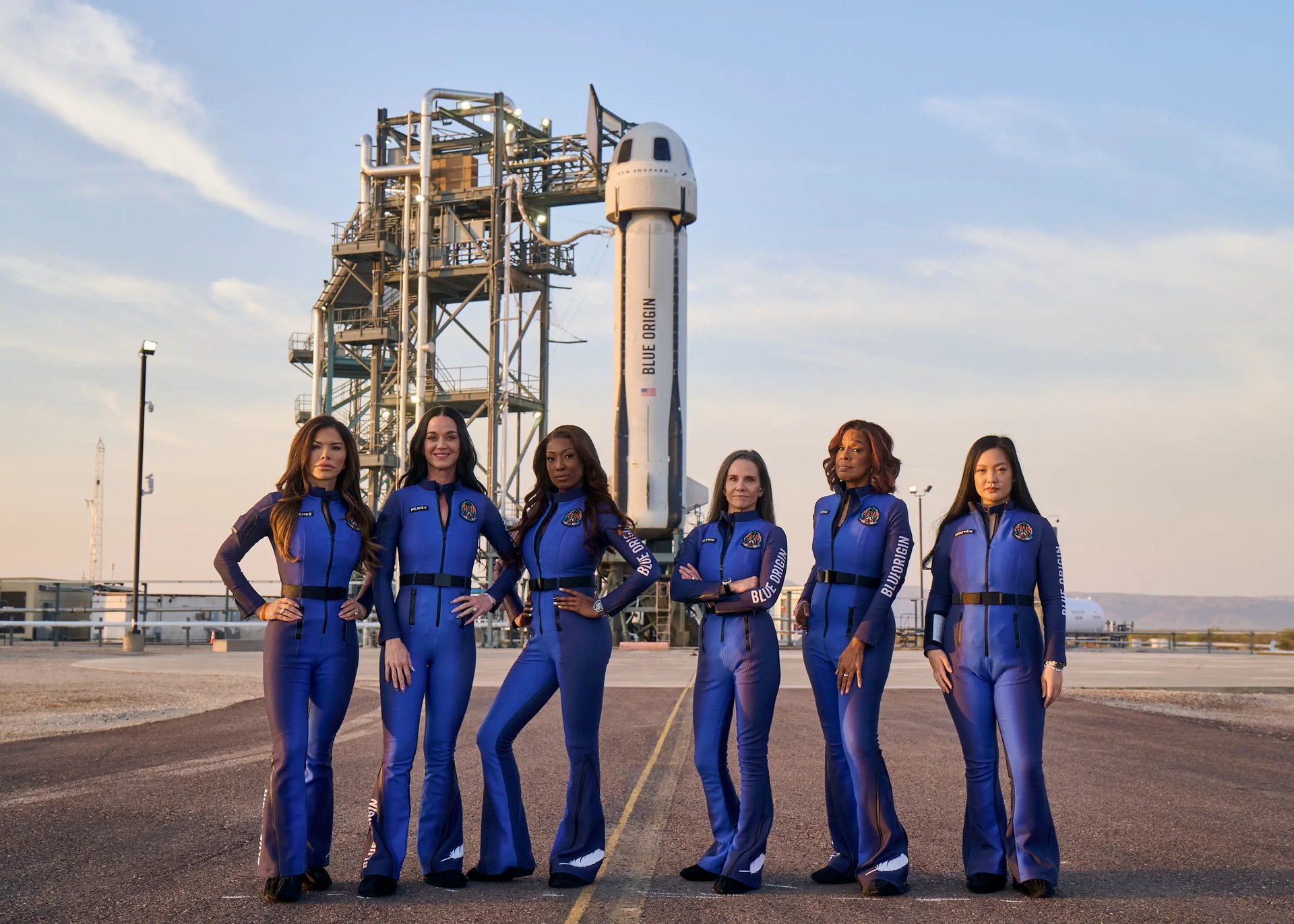The new space race
There’s a fortune to be made in the cosmos.

Six women in royal blue spacesuits rocketed to the edge of space this week, with pop star Katy Perry vowing to write a song about her “highest high” and CBS’s Gayle King rejecting the “astronaut” title upon return. The 10-minute Blue Origin publicity flight delivered its promised social media moments: Perry kissed the ground while King waxed philosophical about Earth’s beauty. Fellow passenger Lauren Sanchez, who designed the sleek suits with luxury fashion house Monse, rushed to embrace fiancé (and Blue Origin founder) Jeff Bezos after touching down.
Suggested Reading
But beyond the celebrity spectacle lies a more consequential story: There’s a fortune to be made in the cosmos. According to a McKinsey report released last year, the global space economy was valued at $630 billion in 2023 and is expected to almost triple to $1.8 trillion by 2035, growing at twice the projected rate of global GDP.
Related Content
At the center of this booming market stands Elon Musk’s SpaceX, whose valuation has skyrocketed to $350 billion as of December 2024, according to CNBC. With its near-monopoly on the U.S. satellite launch market and approximately 7,000 Starlink satellites in orbit providing high-speed internet to about five million subscribers, SpaceX’s dominance seems nearly unassailable.
The company’s influence was further cemented earlier this month when the Pentagon awarded SpaceX the lion’s share of a $13.5 billion launch contract through 2029. SpaceX secured $5.9 billion for 28 missions, while United Launch Alliance received $5.3 billion for 19 launches and Blue Origin got $2.3 billion for seven missions. After the announcement, Musk couldn’t resist taking a swipe at his competitors.
“Winning 60% of the missions may sound generous, but the reality is that all SpaceX competitors combined cannot currently deliver the other 40%! I hope they succeed, but they aren’t there yet,” Musk said on X.
For companies trying to compete with such overwhelming market advantage, the path forward requires unprecedented cooperation. At the recent Satellite 2025 conference, the CEO of Aerospacelab, a Belgium-based satellite manufacturer, warned that individual companies cannot match SpaceX’s “extreme vertical integration” alone. “We have to break some barriers and work more as a team by openly merging or forming joint ventures to share the risk,” CEO Benoit Deper said, according to SpaceNews.
The industry appears headed for major consolidation. In a striking forecast released in January, venture firm Space Capital predicted that both Boeing and Airbus will divest their space divisions in 2025. “These divestitures by entrenched government contractors marks a pivotal moment in the space economy, as it changes the competitive landscape, establishes a new power broker system, and creates new opportunities and risks in the government’s extended capabilities in space,” the report said.
Space Capital also projects 2025 to be “one of the most transformative years on record for the space economy,” partly influenced by Musk’s prominent position in the Trump administration, which is expected to maintain a “strongly pro-growth and anti-regulation” stance.
California-based startup SpinLaunch represents one of the more innovative challengers with its revolutionary kinetic launch system — essentially a massive high-tech slingshot that spins satellites before releasing them toward space. This approach aims to deploy up to 250 microsatellites in a single mission, which would surpass SpaceX’s record of 143.
Beyond sending celebrities to space, Blue Origin itself is intensifying competition with its New Glenn rocket, recently completing its first mission in a direct challenge to SpaceX’s larger Starship. The company received a boost when Jared Isaacman, President Donald Trump’s pick to lead NASA and a commercial astronaut himself, publicly congratulated Monday’s mission. Isaacman earned his astronaut wings as commander of SpaceX’s Inspiration4 mission in 2021, the first all-civilian orbital spaceflight, and he later led additional private missions to test Starlink capabilities in space.
Other serious contenders are rapidly emerging. California-based Rocket Lab aims to take on SpaceX’s workhorse Falcon 9 with its Neutron rocket, while Texas-based Firefly Aerospace has already secured NASA and Space Force contracts. California-based Relativity Space plans to debut its partially 3D-printed Terran R rocket next year, while Colorado-based United Launch Alliance’s Vulcan Centaur rocket is expected to complete more launches in the coming months.
The road ahead remains turbulent for all players. SpaceX has weathered recent FAA groundings following malfunctions and Starship test flight failures that saw debris raining from the sky, yet it still achieved 130 launches last year. These setbacks highlight the inherent risks of space operations, where even minor failures can cost hundreds of millions and set timelines back by months or years. For newer entrants with smaller capital reserves and less political influence, such delays could prove existential.
Perhaps Katy Perry’s next hit won’t just be about her personal journey to the edge of space, but about the far more dramatic race unfolding below — a high-stakes competition that could reshape humanity’s relationship with the cosmos for decades to come.
—Jackie Snow, Contributing Editor